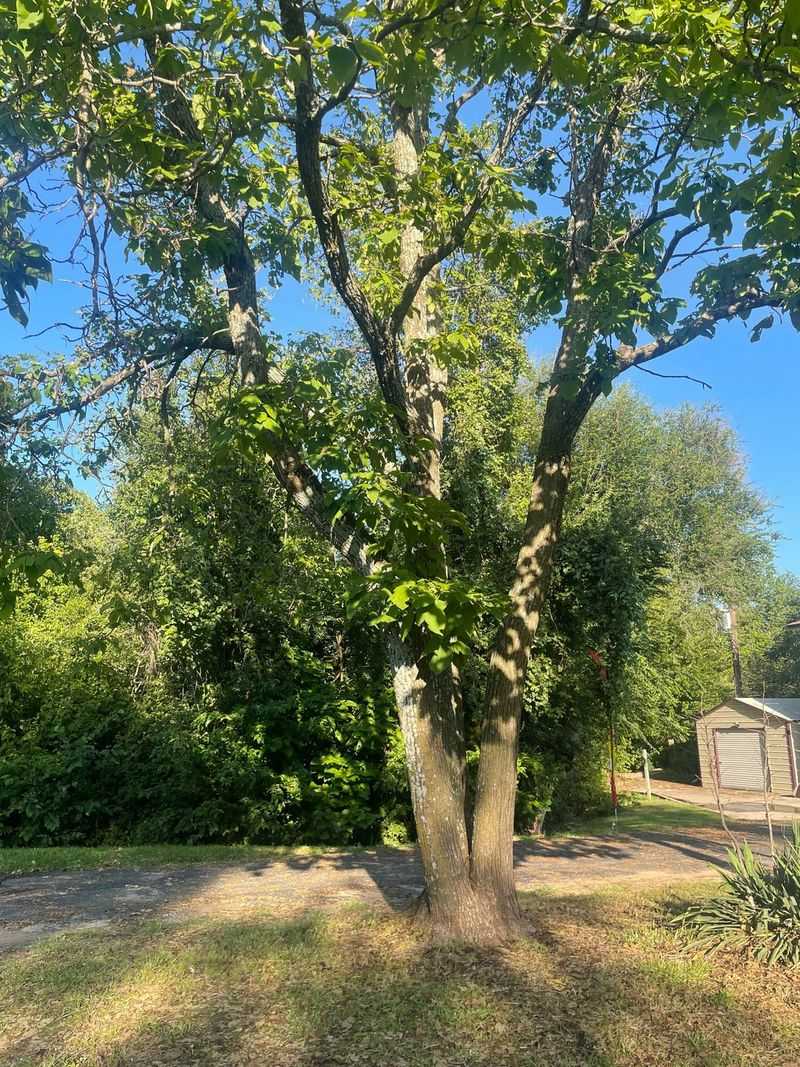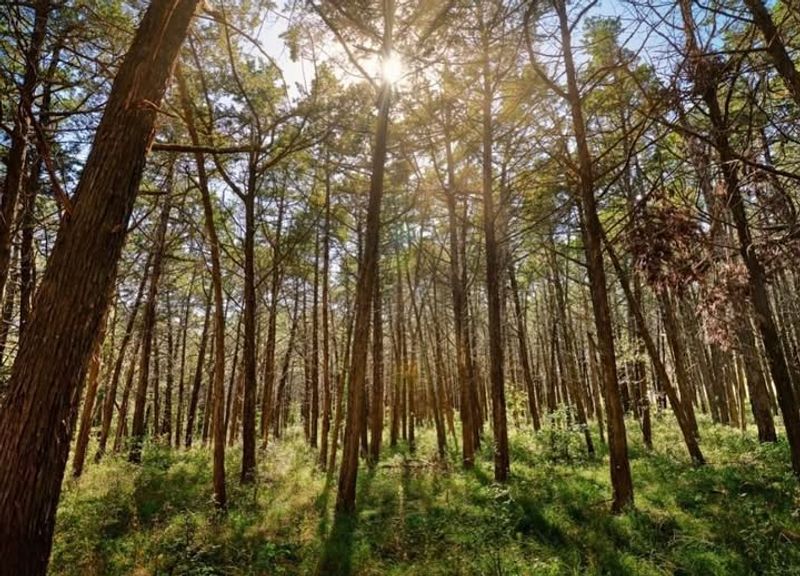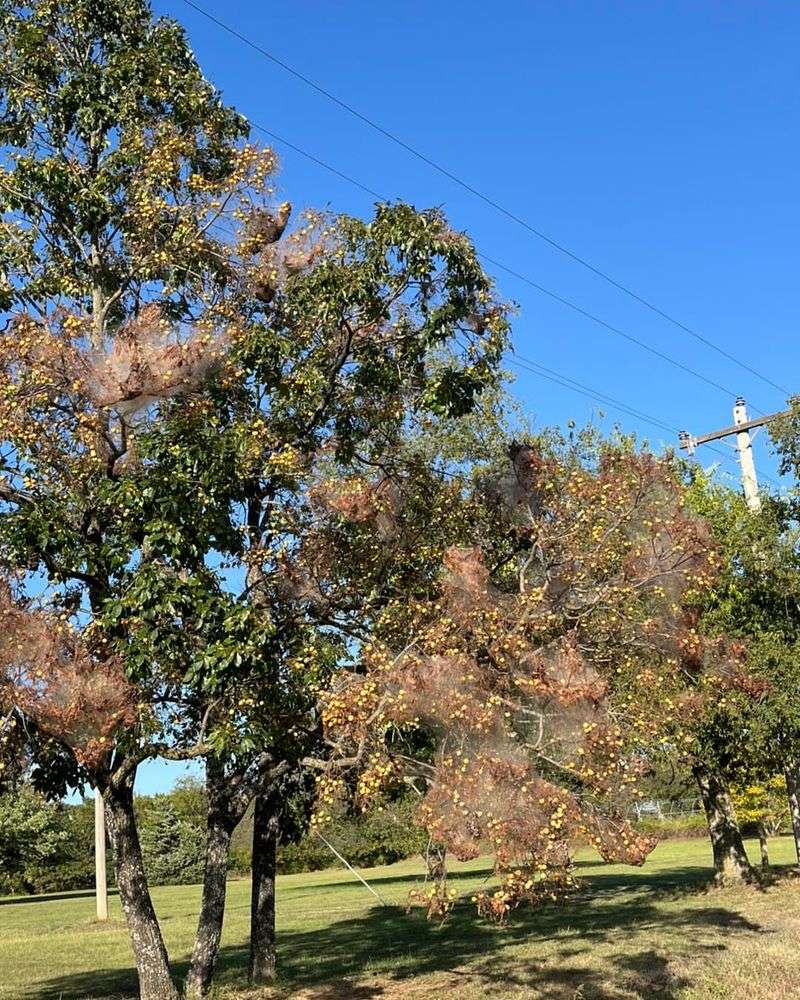If you’ve spotted a purple-painted tree in Oklahoma and thought it was just decoration, think again. I remember the first time I saw one and had to look up what it meant.
It turns out, the color carries an important message that not everyone knows. Once you find out, you’ll never look at a purple tree the same way again.
1. Legal Property Boundary Markers
Property owners across Oklahoma use purple paint as an official way to mark their land boundaries. Instead of putting up expensive fences or metal signs that rust and fall down, landowners simply paint trees purple.
State law recognizes these purple marks as legal no-trespassing warnings. When you see purple paint on trees in Oklahoma, you’re looking at a property line that tells you to stay on public land or get permission before crossing.
2. Cheaper Than Traditional No Trespassing Signs
Buying metal signs for every corner of your property gets expensive really fast, especially if you own lots of acres. A single can of purple paint costs way less than dozens of signs and lasts for years.
Oklahoma ranchers and farmers love this money-saving method because paint doesn’t get stolen like signs do. Weather might fade the color over time, but a quick touch-up is simpler than replacing missing or damaged metal warnings constantly.
3. Protection Against Hunters and Trespassers
Hunting season brings lots of people into Oklahoma’s woods and fields looking for deer and other game. Purple painted trees create clear visual warnings that tell hunters they’re about to enter private property where they need permission.
Trespassers can’t claim they didn’t see a warning when purple marks are visible from far away. Landowners feel safer knowing their property boundaries are clearly marked, reducing unwanted visitors and potential dangerous situations during busy outdoor seasons.
4. Recognized by Oklahoma State Law
Back in 2017, Oklahoma officially passed a law making purple paint marks legally binding property warnings. The law specifies exact requirements: marks must be vertical lines at least eight inches long and one inch wide.
Paint needs to be placed between three and five feet off the ground so people can easily spot it. Oklahoma joined several other states with similar purple paint laws, giving rural property owners a standardized, court-recognized method for posting their land without traditional signage.
5. Easy Visibility in All Seasons
Unlike signs that get covered by vines or hidden behind growing bushes, purple paint stays visible throughout every season in Oklahoma. Winter snow might cover the ground, but those bright purple marks on tree trunks remain easy to spot.
Summer’s thick vegetation can hide metal signs completely, making boundaries unclear. Purple paint cuts through all that green growth, standing out boldly against brown bark whether leaves are falling or flowers are blooming across Oklahoma’s changing landscape.
6. Low Maintenance Compared to Fencing
Building and maintaining fences across huge Oklahoma properties requires constant work, money, and materials. Wooden posts rot, wire rusts, and storms knock sections down regularly.
Purple paint eliminates most of that headache since trees are already standing exactly where you need boundary markers. A quick inspection every few years and maybe some touch-up painting is all the maintenance required. Oklahoma ranchers especially appreciate how purple paint survives harsh weather better than physical barriers that need regular repairs and replacement.
7. Environmentally Friendly Warning System
Metal signs eventually rust, break, and become trash scattered across Oklahoma’s beautiful landscapes. Manufacturing signs also uses resources and energy that impact the environment negatively.
Purple paint is a simpler, greener solution that doesn’t add garbage to nature. Trees aren’t harmed by exterior paint on their bark, and the paint itself can be chosen from environmentally safer options. Oklahoma landowners who care about conservation appreciate marking boundaries without filling their property with metal and plastic that eventually becomes waste.








